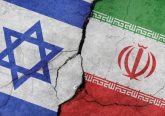
If humanitarian agencies have been preoccupied with intra-state wars in the last twenty-five years, might they now have to refocus and respond to humanitarian needs around mass demonstrations? The rise in mass protests against dictators, mining companies and western media suggests they might.
Mass demonstrations have been a significant part of political life for centuries. In France, eyewitness accounts of the protests supporting the Paris Commune in 1871 describe “waves of people” overpowering military positions. In Britain, some years later, the suffragettes brought 500,000 people to a mass protest in Hyde Park in 1908.
Mass demonstrations were an essential part of the Indian independence movement against British imperialism in the first half of the twentieth century.
In the second half of the century courageous mass protests against communism, apartheid and the Shah in Iran were often met with bullets, while students and anti-war protestors mobilized large crowds in the US and Europe.
In the first few years of this new century, mass demonstrations have gathered momentum as the preferred manifestation of social and political conflict. Non-violent and violent protest has combined well with mobile phones, instant global media coverage and a heightened sense of citizenship to become the instrument of choice in oppositional politics.
Mass demonstrations have shaped the Arab Spring. Mass protest and “occupations” have been the signature activity of the anti-capitalist movement in New York and London. Last week, anti-western Islamist fury was easily channelled into mass protests across the Maghreb and the Middle East. In China, there are regularly massive demonstrations against big business and regional governments that go largely unreported. This month South Africa has seen powerful demonstrations around labour rights in mining, with 34 protestors shot by police. Peru’s anti-mining demonstrations have seen 10 deaths this year. Student demonstrations around elections in Mexico have made their mark.
Mass demonstrations are obviously preferable to war as a means of social and political change. Public protest sits at the heart of democracy as a right and as a public good. The adoption of mass protest over armed conflict is to be welcomed after decades of vicious civil wars, often perpetrated by small groups of armed men with no broad-based political agenda and little desire to shape one.
So this is progress. Most scholars agree that war is currently in decline. This is no consolation to people in Syria and DRC but is a very welcome trend. New confidence in mass protest may be a part of this decline. The ability of leaders to mobilize and organize people fast and relatively safely may be proving a much more respectable and legitimate way of staking their ground as a political leader. It may well be a quicker route to victory than war.
But crowds – like wars – are notoriously difficult things to predict. They can suddenly take different directions. Efforts to control them can backfire as we saw in London’s student riots when “kettling” strategies seemed to start violence rather than prevent it. Crowds can be provoked by authorities or activists to start riots that kill people and destroy property. When pressed into inappropriate and unsafe spaces, people can quickly become the victims of “crowd crush” – as happened tragically in Mecca and Hillsborough.
So what does all this have to do with humanitarian action and with agencies like Red Crescent and Red Cross societies, Oxfam, Save the Children and Medecins Sans Frontieres? Ideally, it has nothing to do with them. In most countries demonstrations are respected, facilitated and pass off well. They are genuinely positive occasions for men, women and children to enjoy their rights to freedom of expression.
But this is not always the case in states where policing and emergency services are weak, and authorities are inimical and deliberately aggressive in their strategies of crowd control. And what if new forms of mass occupations develop – around corporate “land grabs” for example – where thousands of poor people stay in protracted protest and a political standoff without sufficient health care and food. Would this then become a humanitarian emergency of sorts?
The International Committee of the Red Cross (ICRC) is rightly voicing concern about “Situations other than Armed Conflict”. The criminal narco-conflict in Mexico, for example, is the source of higher death rates than most wars, and violence in the favelas of Brazil can reach battlefield level.
ICRC’s recent publication, Violence and the Use of Force, spells out the legal framework for managing policing and restraint around situations other than armed conflict. They specify “assemblies, demonstrations, internal disturbances, tensions and states of emergency” as discrete categories of potential violence and emphasise state responsibility for legal, necessary, limited and proportional use of force.
Presciently perhaps, ICRC observes that “the line separating tensions and disturbances from armed conflict can sometimes be blurred”. The “intensity of the violence” is the key determining factor and this, of course, can develop fast in mass protest situations.
It might be wise for humanitarian agencies to instruct their research departments to start reading the considerable social, psychological and political literature on crowds and mass demonstrations. Hopefully, they will not need it and mass protest will continue to be largely peaceful and responsibly managed. But, if not, then humanitarian agencies may be required to provide some innovative new forms of rapid response in the midst of widespread political protests of all kinds.
Dr Hugo Slim is a Senior Research Fellow at the Oxford Institute of Ethics, Law and Armed Conflict where he is working on humanitarian ethics in war and disaster with 12 of the world’s leading humanitarian agencies.
This post also appears on Thinklong, the Oxford Martin School blog.




1 Comment
Dear Hugo,
Very interesting article!
As someone who lectures on international conflicts, this article provides a new perspective which I shall certainly dwell upon in my classes this coming academic year.
Thank you for an enlightening article.
Yoav
D.Phil St.Antony’s College Oxford, M.Phil St.Edmund’s Cambridge.
Dr Yoav J. Tenembaum
Diplomacy Programme
Political Science Department
Tel Aviv University
Tel Aviv, Israel